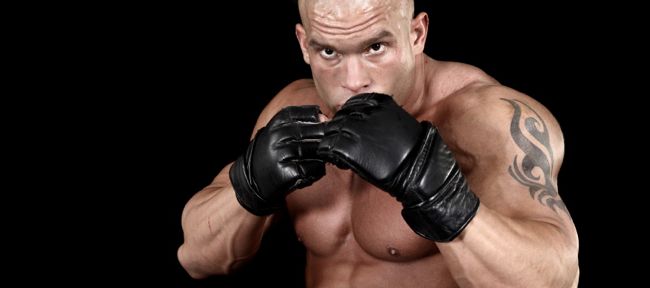
I had been working with an athlete for several weeks in a traditional one-on-one setting and had noticed that his strength, energy levels, and overall intensity were down. In a recent session, I could sense early on in our mobility work that he was just going through the motions. Perhaps my teaching cues and motivational lingo weren’t hitting home or maybe he just had a fight with his girlfriend earlier that day about some Facebook photos his buddy posted of him from Friday night. Whatever the reason, the session started out poorly.
Sensing that I wasn’t connecting with him, I decided to join in the session and train alongside him. I definitely wouldn’t try this with every client and athlete. However, he’s an experienced fighter with excellent lifting technique, so I didn’t give this decision a second thought.
As soon as we both started in on our jumping jacks during the dynamic warm-up, I immediately sensed a change in mood and effort. He was more attentive to my instructions, was working much harder, and even started in with some friendly competitive banter. After what turned out to be one of his best strength and conditioning sessions to date, we got to talking about his morning. I found out that he had been dealing with some family issues earlier in the day. As soon as I heard that, I immediately realized why his session had started out so poorly. His thoughts had become his actions, and he just wasn’t there mentally.
Your mind is a powerful thing and it influences everything you do. What’s going on “upstairs” allows you to utilize your physical skills to the best of your ability. So what triggered this reaction with this particular athlete? Why did having me join in the session elicit such a positive response? And why partner train with someone who competes in an individual sport?
Generally speaking, I think it was due to something I like to call “competitive fire.” Having someone to train alongside sparked his endorphins and put him in the right frame of mind. In both partner and small group training sessions, more cooperation and communication is required from both the coach and the athlete(s) involved. These characteristics drive the competitive fire inside us all, which you obviously need in surplus for an MMA match or tournament.
Olympian Bruce Jenner once said, “You have to train your mind like you train your body.” This statement is particularly accurate when it comes to combat athletes. Think about this—an athlete may train for a specific fight for anywhere from 8–12 weeks. That fight could last a mere 15 seconds! Conservatively, that’s 9600 minutes of blood, sweat, and training for one quarter of a minute! How do you prepare for this intense pressure? From a physical standpoint, you have a well-designed periodized program so you can feel quick, powerful, and strong and have plenty of gas in the tank. Your physical preparation couldn’t have gone any better. What about from a mental standpoint? Are you unwavering and mentally focused and is your mind right for battle?
As coaches, we must not only get athletes stronger physically but mentally as well. We must enhance their mental toughness while controlling anxiety at the same time. We need to understand what motivates these athletes and push them to improve and succeed. I think partner and small group training helps us get there.
Since completing the partner session that I discussed earlier, I have consistently incorporated this training (and small group training as well) into my program design for fighters. A brief list of just some of the positive benefits this type of training provides includes:
- Development of camaraderie and a strong support system
- Positive reinforcement and motivation, especially if you’re having an “off” day
- Friendly competition
- Improved confidence and self-esteem
- Prompts to push yourself even more to “keep up” with the team
In addition, if you don’t want to get up for that 6:00 a.m. strength session and you have a partner waiting for you, you’ll get up.
I try to incorporate full-body movements that include everything from pushing, pulling, rotating, changing levels, and jumping. For metabolic circuits, I will typically set up five stations that are each 60 seconds long. An athlete and his partner will complete all five stations consecutively and then rest for one minute before repeating the five-station circuit again.
A sample partner training metabolic circuit routine might look something like this:
1. Alternating tire flips with a 15-second “battle” at the end
2. Horizontal rope pulls (aim for two times each)
3. Band jumps (20 yards with partner resistance)
4. Prowler pushes (with burpees), 20-yard push
5. Dumbbell grip walks (20-yard walk with 10–20-lb dumbbells)
I believe that anything that contributes to your physical, mental, emotional, and spiritual state has everything to do with your focus on the mat. An athlete must be in peak condition mentally or he won’t be at his best physically. I consistently do informal assessments of athletes (and “every day” clients for that matter) to evaluate psychological balance. I constantly check in with them to see how other aspects of their lives are going. We must frequently communicate with all of our clientele in order to adapt accordingly.
As the athletes I work with continue to improve and become faster, stronger, and more explosive from training, I see a positive impact on their self-esteem and confidence. Is this more of a psychological response or a physical response? It’s probably a bit of both, but regardless, it’s good stuff. I’m not saying that partner training should be the “be all end all.” I’m simply saying it may be good to incorporate into your program design to shake things up and train your athletes in a new way both physically and mentally.









